This Unity Health team is using math to tackle global health problems
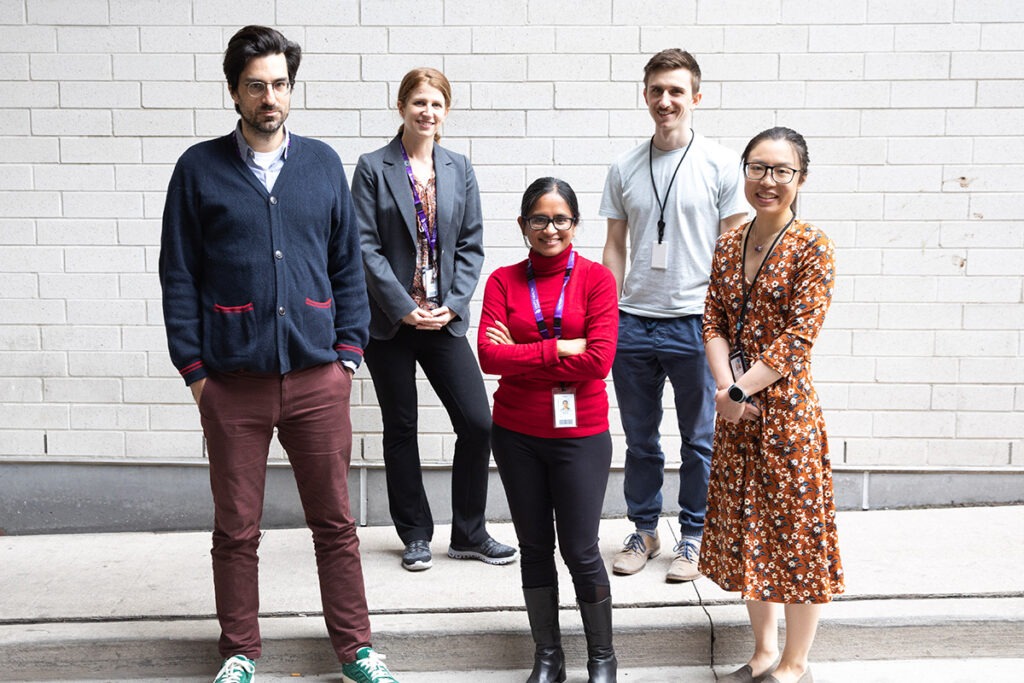
In an office in downtown Toronto, a dedicated team of Unity Health researchers is using math to tackle some of the world’s most pressing health problems, including COVID-19, Ebola, HIV and human mpox (monkeypox).
The Research Group in Mathematical Modeling and Program Science develops and uses math models to better understand, analyze and predict epidemics. Housed within the MAP Centre for Urban Health Solutions and led by principal investigator Dr. Sharmistha Mishra, the lab includes data scientists, mathematical modelers, epidemiologists, biostatisticians, graduate students and research associates. Together, they use math and data to understand the factors driving infectious disease transmission in the hopes of helping to craft more tailored, impactful solutions.
Grounding the lab is a deep commitment to public health, equity and scientific inquiry, says Mishra, who is also a MAP scientist and infectious disease physician at Unity Health. This means taking nothing for granted about viruses, human behavior, and the structural factors that could be fueling disease transmission, she said.
“Our models are really part of the science that serves communities… we approach our modeling with that lens,” she said. “We challenge and interrogate assumptions that go into what we think we understand about epidemics.”
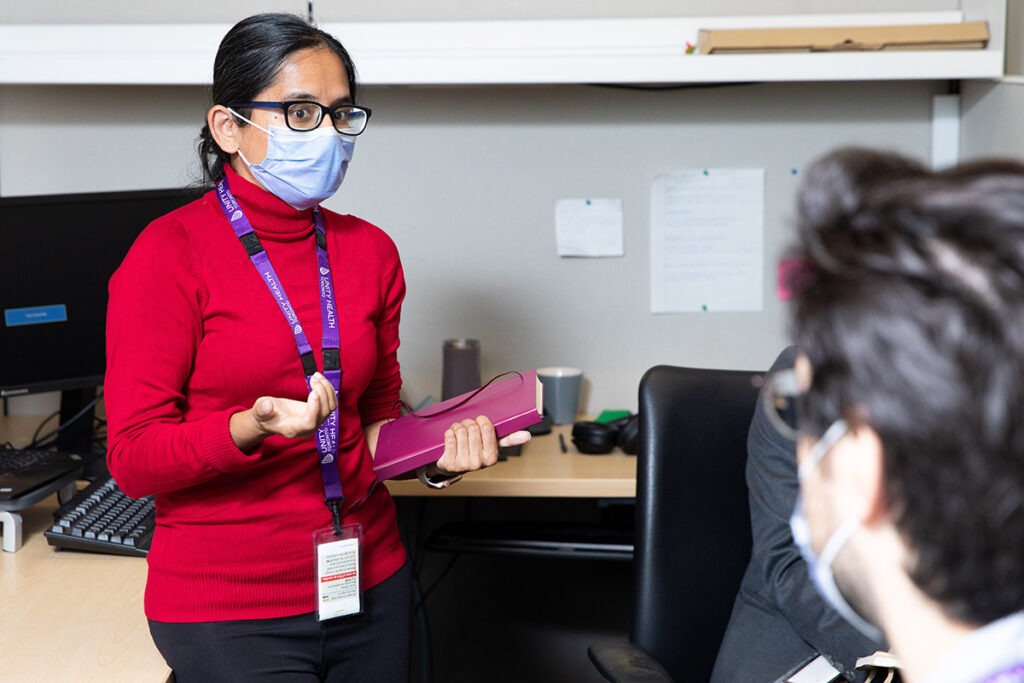
The lab has produced important knowledge about the causes and consequences of differential risks of infectious disease transmission, focusing primarily on HIV and other sexually transmitted infections. Recently, the team also contributed to the COVID-19 pandemic response, examining how the epidemic initially emerged and then concentrated at the intersections of occupation and housing, and pathways along which economically marginalized communities faced disproportionate risks.
Mishra says Unity Health and the MAP Centre have unique interdisciplinary ecosystems that encourage collaboration, risk taking and thinking outside the box. They also provide valuable learning opportunities, from working with other scientists and researchers to consulting with healthcare providers who are caring for patients and communities in real time. “We can explore new ideas and be creative, and have the space and the safety to challenge assumptions,” Mishra said. “I couldn’t imagine a better-suited place to drive us to answer really challenging questions and to have those ‘light bulb’ moments every day.”
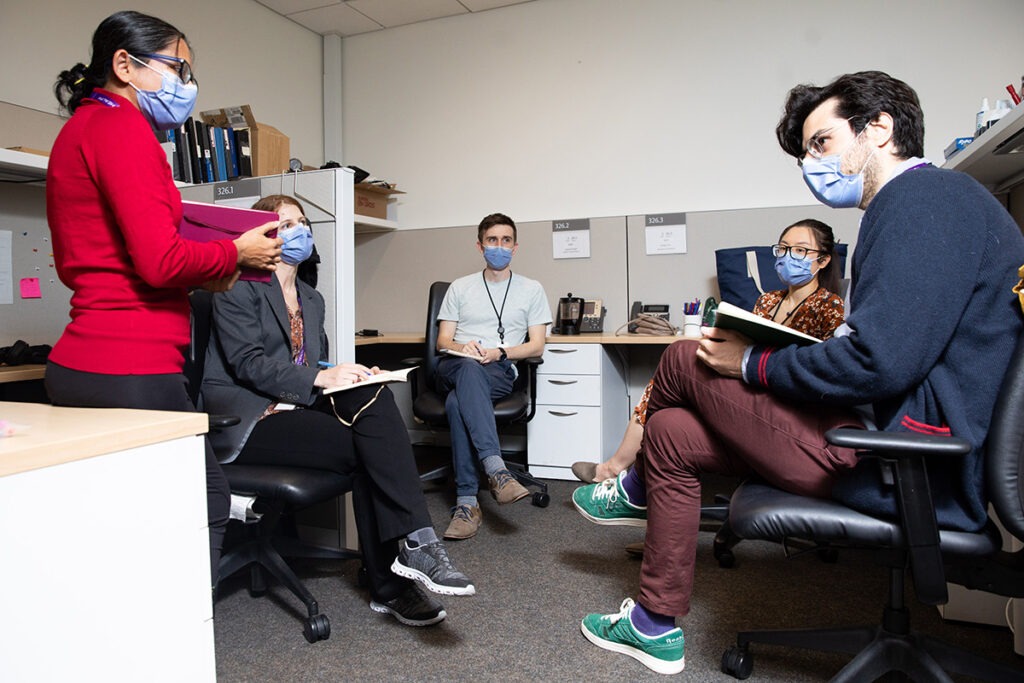
Here’s an introduction to some of the lab team members, and their respective research projects:
Dr. Suzanne Shoush: How does trust spread through a community?
Dr. Suzanne Shoush is completing her Master’s degree under the supervision of Mishra and Dr. Janet Smylie. Her main research looks at the transmission dynamics of infectious diseases through urban Indigenous communities. Key to her work is not just understanding how diseases spread, but also how interventions spread. For example: How does trust spread through a community? How does access to culturally-safe resources impact the spread of a healthcare intervention through a community?
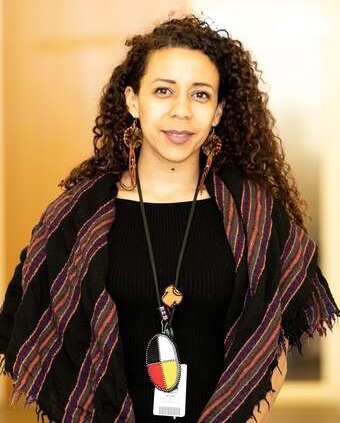
For Shoush, whose father is Sudanese and mother is Coast Salish, it is crucial that mathematical models take into account the heterogenicity of communities and especially the specific realities, demographics, and needs of Indigenous communities.
“There’s huge differences in the Indigenous community,” she said. “There’s different kinship systems — how networks are formed, who people interact with — and different social determinants of health, from housing to chronic diseases to access to primary care.
“How do we model specifically to make sure that resources are allocated in a responsible way for that community? And how do we show the impact of culturally-appropriate care and access for Indigenous people?”
Jesse Knight: Evidence to advocate for communities experiencing disproportionate risks of infections
Fourth and final-year PhD student Jesse Knight joined the lab nearly five years ago as a math modeler. His thesis focuses on simulating HIV transmission in the Southern African country of Eswatini. The work explores the different assumptions that might be made when building models, and how those assumptions may impact the outcome of current research questions. For example, many modeling studies assume that HIV treatment reaches everybody equally, but emerging data suggest this is not always the case. Some of the results of this work have been used to advocate for prioritizing HIV resources to populations who face greater risk, such as individuals engaged in sex work and other key populations. Having this effect on real-world public health interventions is hugely rewarding, he said.
“This equity perspective – the fact that almost every project, every research question has an equity lens to it — it’s really motivating,” Knight said.
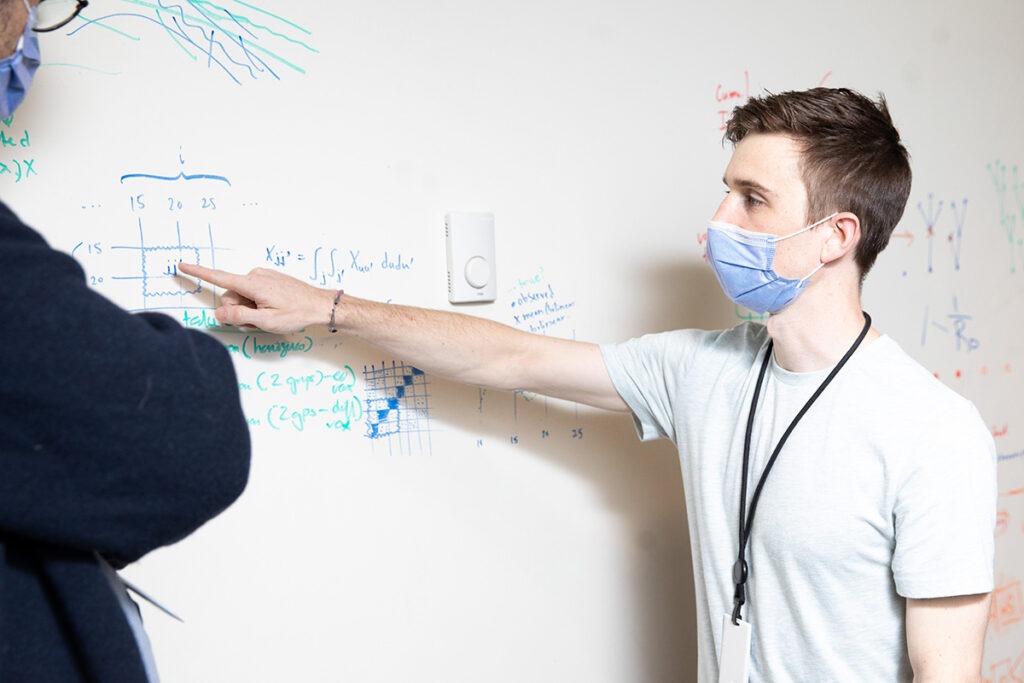
Knight has generated advancements in how scientists model HIV and COVID, and he recently worked on mpox transmission modeling to inform vaccination programs. In writing the equations and code for these models, he pauses to check the underlying assumptions, and often ends up adding incremental improvements to better reflect the real world. “I’m grateful to have the opportunity to push the science forward, both in terms of the questions, but also in terms of the models and the methods.”
Dr. Korryn Bodner: Science with a real-world impact
Dr. Korryn Bodner, research associate at the lab, joined the team in December 2021 to focus on how COVID-19 variants of concern can exacerbate existing inequities within communities. But when COVID vaccine studies were published with unexpected results, Bodner pivoted her research. She now also explores the biases that can produce these unexpected study results.
Starting at the lab amid the Omicron wave meant working with an intense spotlight focused on all-things COVID. This heightened attention was satisfying but also stressful at times, said Bodner.
“There is the spotlight and it’s great that you can try and find ways to communicate more directly with the public, and hopefully with decision makers,” she said.
“You hope that your research has real value and impact on what’s going on, but at the same time, this greater potential for impact also comes with a greater responsibility to ensure that a study’s results, caveats, and broader implications are clearly understood and communicated.
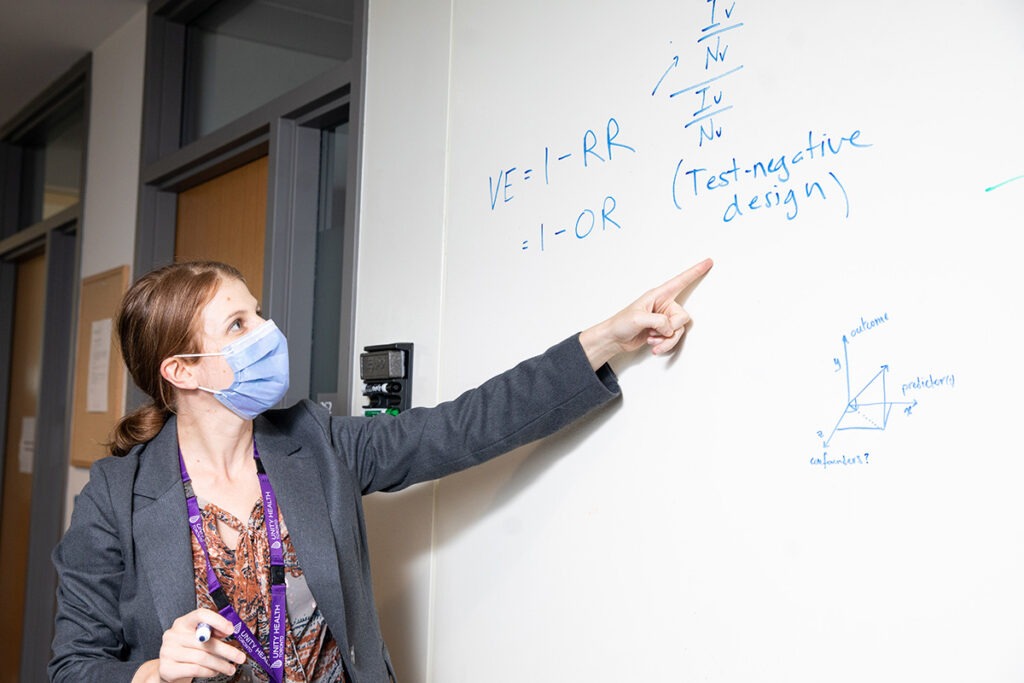
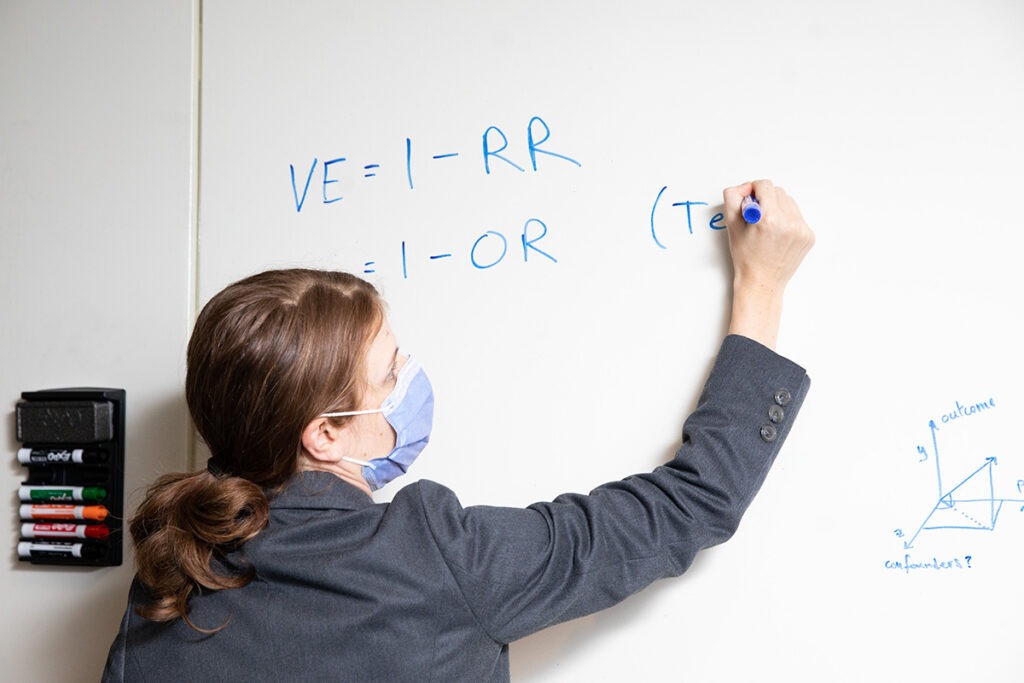
“Misinterpreted findings or findings without proper context can become widespread and the messaging can become difficult to try and change or roll back once it is out. This is also why we think it is important to study the role of biases in research and to clearly communicate how they can influence important study results.”
Bodner says the lab’s deep commitment to producing high-quality science is inspiring. “It’s great to work with such a diverse group of people with varying backgrounds and this emphasis on doing science well, while always keeping in mind the communities that we’re producing science with and in service of.”
By Marlene Leung
Photos by Katie Cooper
